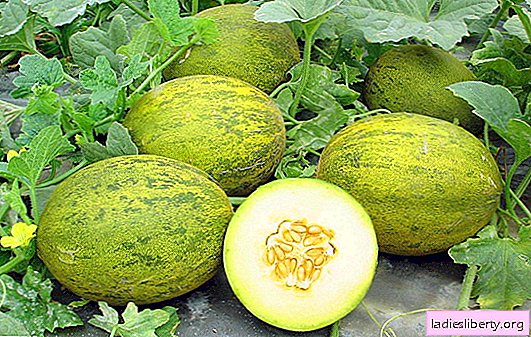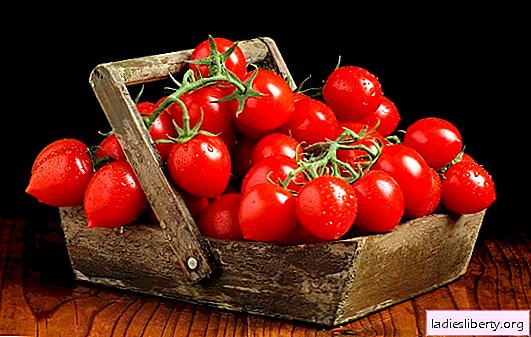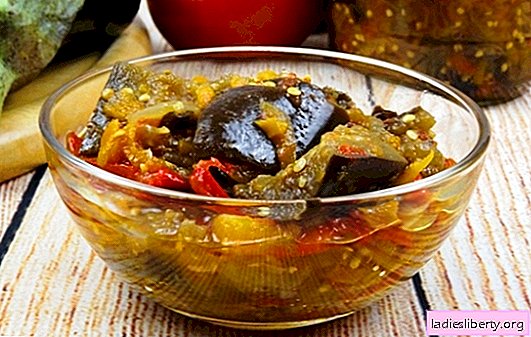
Melons are different, but they all develop well and give a normal harvest only when creating optimal conditions.
Melon, unlike other plants in the garden, negatively relates to excess moisture. She loves dry and hot weather more, she is not at all afraid of the direct rays of the sun. For this reason, it is easier to grow it in the open field in the southern regions.
Of course, it is a pity for the residents of the northern regions and the middle zone that it is difficult for them to plant melon in the country house without shelter. But this incorrect opinion, it turns out, it is possible to grow melon in the open air not only in the southern regions of Russia.
Normal melon harvest can be obtained in the middle laneand even grow it in Siberia. This culture has many different varieties, differing in requirements of the climate, in taste and form.
Growing melon. Variety and seed selection
Errors in the selection of seeds and their planting can leave you without a crop, use only proven organizations for planting material.
Purchase seeds considering:
• The place where the seeds were collected. Buy only from manufacturers from your region, they will be adapted to the characteristics of your climate;
• The duration of the growing season. A small period guarantees harvest in any region;
• The size of the fruit. Do not immediately believe the statements about the huge number of large melons. Gourds well developed only in the southern regions. Even in the greenhouse you can only get small melons, although they grow a lot;
• Term germination of seed. Purchase pumpkin and melon seeds that have lain for about three years and give more ovaries.
Many gardeners fall into a stupor, if necessary, select the appropriate seeds. First, for the middle band, you should not choose varieties with large fruits. Otherwise, they will not have time to fully grow and mature. In addition, it is necessary to study all the characteristics of the variety; they are most often indicated on the packaging. A period sufficient for the formation of full fruit from the ovaries should be short. In addition, if a gardener wants to get melons not only to his table, but also to realize a part of the crop on the market, it is necessary to take into account such properties as transportability, taste and size of fruits.
Most often in the middle lane are planted melons:
• Gift to the North;
• Pink champagne; krimstar;
• Moscow near Charstoln;
• Cinderella.
After the gardener chooses a suitable variety for himself, it is necessary to prepare the planting material for sowing. It is necessary to mention that if you use fresh seeds (judging by the experience of practitioners), then you get a little ripe melons, for this reason you need sow seeds harvested two or three years ago.
Another component in the proper preparation of planting material for sowing is hardening. This will provide an opportunity to improve their germination, produce this operation 1-2 weeks before planting. First, the seeds are immersed in water heated to 30-35 degrees. After a few hours, they must be removed, dried a little and kept for a day in a room with a temperature of 18 degrees. After that, the seeds are transferred to the refrigerator, where to keep 18 hours. Next, again placed in a room with temperatures up to 20 degrees. So, repeat three times and sow the seeds in the garden.
Alushta - 70 days pass to ripeness of fruits. Melon oval, large, grows to 1.5 kg. The flesh is juicy, sweet, white.
Dessert 5 - fruits of small size, grow weighing up to 1.6 kg, tender, very sweet, white-green flesh. Differs in the increased lezhkost.
Golden - roundish fruits, yellow color weighing up to 1.6 kg. The flesh is white, juicy, well resists disease.
Yuzhanka - round, large fruits weighing up to 1.9 kg. Yield, to taste similar to the collective farm.
Collective farmer - the variety is very common, stable, and most suitable for cultivation in the middle belt. Melons are round, orange, weighing 1 kg. Very sweet, white flesh.
Growing melon. Sowing and planting (timing, dressing, shelter, temperature, soil, etc.)

Melon seeds are sown on seedlings in AprilAfter three or four weeks have passed, grown seedlings can be transplanted into open ground. For sowing melons, containers of about 12x12 cm are selected, 3 seeds are sown in each of these pots, deepening them by 2-3 cm. After this, the containers are sprinkled with sand, about 1 cm thick. The pot is placed in a warm and bright room in which the temperature is maintained not lower than 22 degrees. You can use the store for melon seedlings soil mixintended for the cultivation of horticultural crops, or independently mix the soil, consisting of:
1. 1 parts sand;
2. 9 parts peat.
Or use the following composition of the soil mixture:
1. 1 part of garden soil;
2. 3 pieces of humus;
3. 1 tablespoon of potash fertilizer;
4. 3 spoons of phosphate fertilizer;
5. 1 spoon of nitrogen fertilizer.
It is not bad to add a glass of wood ash to the mixture in the bucket. To make it easier for the seedlings to get out, it is better to lay the seeds when sowing. Watering after sowing pots need to be moderate.
At night, it is not allowed to reduce the temperature in the room with seedlings below 15 degrees. After 6-7 days, the first melon seedlings will appear. Since they were planted in pots of 3 seeds, the extra shoots must be removed, leaving only the strongest shoots in the pots.

Seedlings need only be watered gently so that excess moisture does not wet the leaves and stems. Formation of 3 true leaflets is a sign that melon seedlings are strong and can be planted on a bed. At this age their pinch, which leads to the emergence of additional lateral shoots.
In the wells in the garden before planting seedlings, it is desirable to add a little humus, after which they are well watered, planted seedlings, and sprinkle the roots of the seedlings with soil. The wells must be placed at a distance of between them 70 cm minimum.
Important! When planting seedlings do not injure their roots, it is better not to touch them at all. Therefore, experienced gardeners transplant seedlings without destroying the coma of the soil.
Growing melons in the open field
Place for planting melon prepared in two stages:
1. The first of them - digging the soil in the autumn, and fertilizer. It is necessary to dig a bed 40-50 cm deep, and then sprinkle humus on the surface of the site (4 m2 per 1 m2). Then you need to wait for the arrival of spring;
2. The second - must be performed with the first thaw in the springtime. Mineral mixtures are scattered on the surface of the beds (the compositions must contain potassium and phosphorus) and are again digged. After this procedure, the preparation of the bed for planting melons is over.

In the south of our country, spring comes much earlier, which makes it possible to plant even the seeds of late-melon right in the ground. In the pre-cut not less than three meters grooves, planted after 12-15 cm seeds. Top sprinkled with soil, after which the bed is well watered. When sprouts appear, they need to be thinned out, so that the distance between individual plants to leave a distance of 0.5 m, after the bushes grow, the site is once again pierced, leaving the strongest sprouts. As a result, the distance between melon bushes should be no less than two meters.
Growing melon. Care, feeding
Growing a melon, you must be attentive to the care of plants. One of the most important works is sprouting growing shoots. It is necessary to begin it, after the formation of the fifth leaf on them, after this operation, the side shoots will begin to grow on the main shoot of the bush. It is necessary to wait until five leaves are also formed on them and to pinch them too. After that, you need to wait for the formation of ovaries, which in the future will turn into melons. On each lash of a plant, no more than five (in large-fruited varieties) or ten (in small-fruited melon) ovaries should grow. Unnecessary ovaries need to be torn off so as not to deplete the plant.

Melon does not require a lot of moisture, for this reason it needs water moderately. If you live in a region where it often rains, it is advisable to provide shelters during inclement weather. You can use a simple plastic film for this.
After planting melon seedlings in the ground it is necessary feed regularly. To do this, use complex mineral fertilizers, the frequency of feeding every ten days.
Proper care for melon will allow the fruit to keep up until the first frost. If there is not enough time, then nothing terrible, you need to pick the fruits, and they will survive at home.
The main pests and how to deal with them
Melons can be affected by fungal, viral and bacterial diseases, and as a result can die. Sources of infection - soil, plant debris, weeds. To reduce losses from pests and diseases, when growing melons, it is necessary to observe the requirements of crop rotation and agrotechnology, process seed material and seedlings with special preparations.
Gourd Aphid. A sucking pest that multiplies very quickly is placed under the leaves in small groups. The leaves of the plant curl and turn yellow, and then dry. The inflorescences, not revealed, fall.

Gourd Aphid
Control measures: weeds and plant residues must be removed from the beds. Treated crops 30% solution Aktelik, soapy water and 10% karbofos.
Spider mite. The pest is small in size, lives on the lower part of the leaves, they can be detected by webs on leaf plates. They suck the juice, the affected plants turn yellow and die in time.
Control measures: plant residues and weeds must be removed from the garden bed; in the fall, deep digging of the soil is necessary.
Wireworms. The larvae of beetles, damage the stem in the ground, which leads to the death of melons.
Control measures: we remove the remains of plants and weeds, this pest is often collected in them.
Gnawing scoops. Caterpillars live in the soil, they injure the stem of the plant, which can cause the melon bush to die.
Control measures: weeds and plant debris removed from the beds. In the fall, deep soil digging is carried out.
Mealy dew. Whitish patches of small size are noticeable on the stem and on the leaflets; after a short time they spread further and can cover the entire surface of the leaf.
Control measures: When a disease is detected, the plantings process (once every 10 days) 400 g per 100 m2 with 80% sulfur powder. The last treatment can be done no later than 20 days before harvest.
Fusarium wilt. Fungal disease of the melon, affects more late and mid-season varieties, greatly affects the quality and quantity of the crop. Diseased fruits are not so juicy and less fragrant, they are poorly stored. The disease becomes noticeable after the formation of 2 - 3 true leaves, but also during the ripening of the crop. The stems and fruits of diseased plants wither quickly, the leaves of the plant become light.
Control measures: meeting the requirements of crop rotation, removing weeds and plant debris and destroying diseased plants. Deep soil digging in autumn, moderate watering. Seeds before sowing for five minutes are disinfected in 40% formalin. Melons are planted on high ridges. When buds appear on plants, planting is treated with KCl solution.
Anthracnose. In this disease round pink or brownish spots appear on the leaves, over time they become larger. Diseased leaves curl and dry, the plants lash brittle and thin, the fruits change their shape and rot.
Control measures: crops need to be watered moderately, after each watering the soil in the beds is loosened. Landings are pollinated with sulfur or treated with 1% Bordeaux liquid.
Perinosporosis. The disease damages young leaves, with an increase in moisture from the bottom of the leaf, a gray-violet bloom appears.
Control measures: seeds before sowing are disinfected, heating them for 2 hours, in water with a temperature of 45 degrees. Spray the affected beds with a solution of urea, making up a solution of 1 g of fertilizer in 1 liter of water, and treated with Bordeaux mixture. The treatment is repeated after 10 days.











